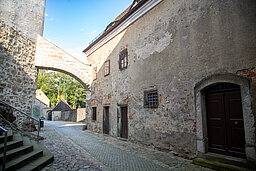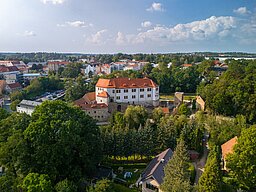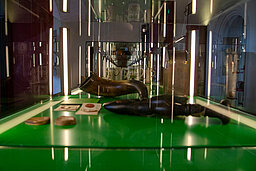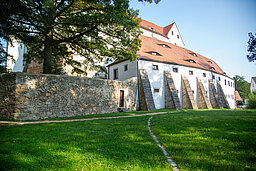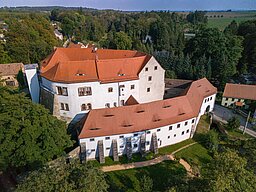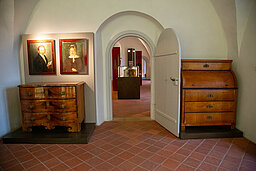

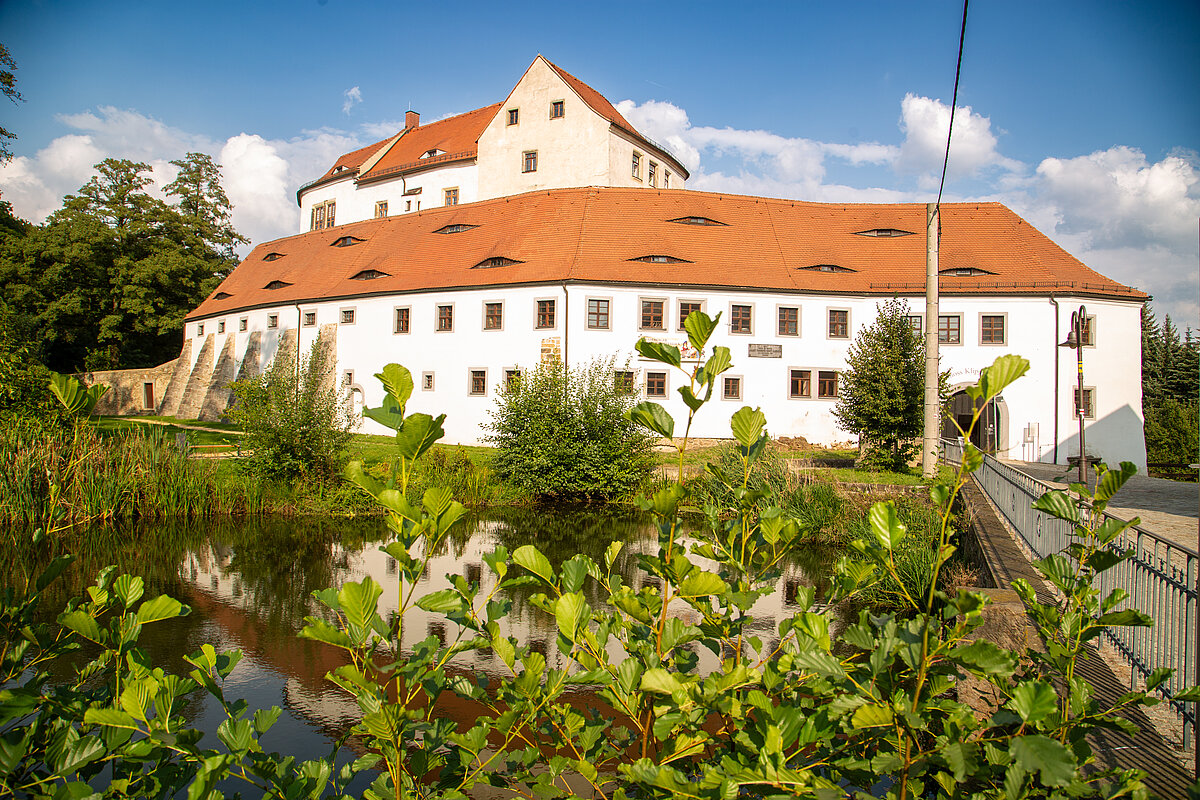
Medieval castle, stately hunting lodge, district court and refugee accommodation: Klippenstein Castle has changed again and again over the centuries. Until the complex on a rocky cliff above the Röder river was threatened with final decay. Thanks to civic commitment and the town of Radeberg, however, it has been preserved and is now the cultural center of the town as a museum.
Seasonal, mostly from April to October; guided tours by arrangement
By car: Take the A4 to the Pulsnitz exit. Follow the S177 to Radeberg. Then follow the signs.
Public transportation: Take a train to Radeberg. From there, take a bus or cab to the castle.
A special kind of journey through time awaits visitors to Klippenstein Castle. They are invited to experience the long and eventful history of the castle with all their senses. In the interactive permanent exhibitions on the castle, town and industrial history of Radeberg, they can “lend a hand”, discover exhibits and listen to reports from contemporary witnesses. They can also take a look at the historical cooperage workshop, which was set up in 2012 in the castle's former gatekeeper's room with original exhibits from the second half of the 19th century.
The fact that Klippenstein Castle still exists and is now the cultural center of the town of Radeberg was not always a matter of course. Its 700-year history has been characterized by ups and downs. Built as a medieval castle in the 13th century on a rocky cliff above the Röder river, it experienced its heyday when it was taken over by Duke Moritz, who had Klippenstein converted into a stately hunting lodge in the 1540s. Under the “building supervision” of the Radeberg bailiff Hans von Dehn-Rothfelser, a student of the Dresden school of architects led by Hans Schickedanz. The dwarf houses on the roof and the representative interiors with sandstone portals, vaults and painted wooden beam ceilings are particularly striking at the time.
However, decline soon followed. And with the end of its importance as a border fortress to Bohemian Upper Lusatia in 1635 at the latest, the end of the castle also seemed to be sealed. From then on - until the end of the Second World War - it only served as an administrative seat and later as a district court. The once stately living rooms and bedrooms of the princes were turned into offices and official parlors. Prison cells are set up in the outer bailey and some buildings disappear completely. During the GDR era, cultural life returned to Klippenstein Castle with the Radeberg local branch of the Kulturbund, but the structural decay could hardly be halted.
If it hadn't been for the committed citizens who have been campaigning for the preservation of the castle since the political changeover and finally convinced the town to restore Klippenstein Castle, including the owl tower, the destroyed equestrian staircase and the Renaissance portal. Thanks to them, parties are once again held in the large banqueting hall, concerts are held both inside and in the idyllic castle courtyard, and even the youngest visitors are given a “befitting” welcome by Damsel Agnes.
